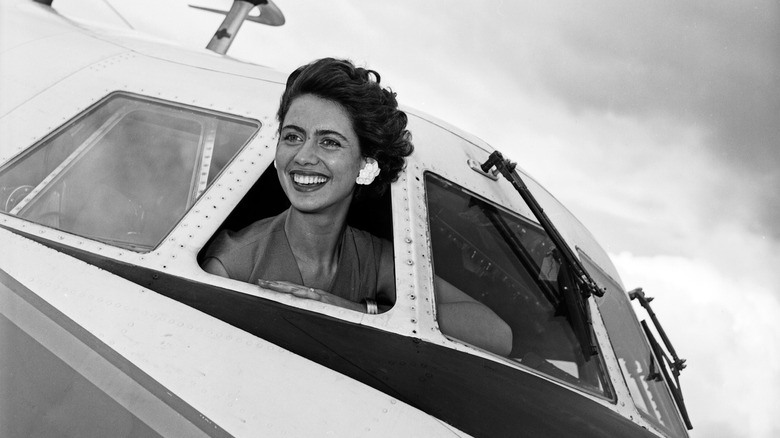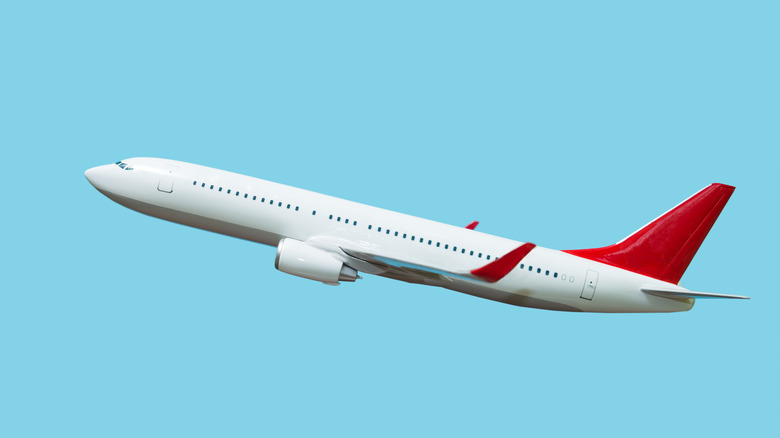The Real Reason Airplane Windows Are Round
If you've ever been on an airplane, you may have noticed the oval-shaped windows located in each row. But why are these windows round when almost every other window is square or rectangular? Willis Orlando, Product Operations Specialist at Scott's Cheap Flights, says (per Reader's Digest) "the round shape, though gentle on the eyes, is for a lot more than aesthetic purposes. Rounded corners are designed to help distribute the pressure exerted on the window evenly, reducing the likelihood of a window cracking under changing air pressure."
Engineers have carefully designed planes to be able to withstand the cold air, lower pressure, and increased drag while up in the sky. Careful thought has always been applied when it comes to airplane design. Designers of the first commercial airplanes carefully created a plane meant to account for changes in air pressure, but didn't take into account the shape of the windows. This ended up being a costly mistake that was later corrected, creating the rounded windows we know today (via Aerotime Hub).
Square windows were originally used in planes
At one point in time, airplanes actually did have square windows. Early commercial airlines, like the de Havilland Comets, included square windows as part of their design. These designs did not last, however. In the 1950s, three separate incidents occurred when the fuselages (the body of the aircraft) tore apart midflight. It was found that the initial cracks occurred at the corners of the square windows (via Smithsonian Magazine). While not the deadliest plane crashes in history, these crashes brought attention to a major flaw in early commercial airplane designs.
So what caused these square-windowed planes to fall apart? When planes reach high altitudes, the air pressure on the outside of the plane decreases, while the inside of the plane remains pressurized to keep passengers comfortable. The pressure difference between the inside and outside causes the plane to expand slightly. The corners of square windows create just enough weakness that the body of the plane becomes susceptible to cracking (via Popular Mechanics).
Rounded windows distribute pressure more evenly
Airplane windows with rounded corners allow the air pressure to be distributed more easily. When the plane slightly expands as it reaches higher altitudes, there are no weak spots created by corners. This results in an overall more stable body for the plane (via Popular Mechanics).
In addition to rounded corners, airplane windows are designed with other safety features as well. First, they are made out of multiple layers of acrylic (not glass). This adds additional weather protection from wind and rain. Another feature includes the tiny holes at the bottom of the window, known as "bleed holes." These bleed holes help keep the air pressure inside the plane at a relatively constant level, because they allow air to pass between the layers of acrylic (via HowStuffWorks). These window design elements, as well as other features like the color of the plane, work together to keep passengers safe while flying.


